Abstract
1. Prostaglandin F2α infused into the vertebral artery of the anaesthetized greyhound in doses which had no effect when given intravenously ((8-64 ng/kg)/min) caused an increase in blood pressure and heart rate.
2. This response was not significantly altered by β-adrenoceptor blockade with propranolol (10 mg i.v.) or by cervical cord section at C4-6.
3. The tachycardia was abolished and the pressor response greatly reduced by vagotomy or atropine (250 μg/kg i.v.).
4. The pressor response which remained after vagotomy was abolished by subsequent sympathetic blockade with bethanidine (2-3 mg/kg i.v.) or bretylium (10 mg/kg i.v.).
5. In contrast to the effects of propranolol or cervical cord section bethanidine (4-5 mg/kg i.v.) or bretylium (10 mg/kg i.v.) significantly reduced blood pressure and heart rate responses to intravertebral prostaglandin F2α. This result suggests that bethanidine and bretylium have some central actions.
6. It is concluded that the cardiovascular effects of intravertebral infusions of prostaglandin F2α are mediated by the autonomic nervous system and that the preferential pathway is withdrawal of vagal tone to the heart.
Full text
PDF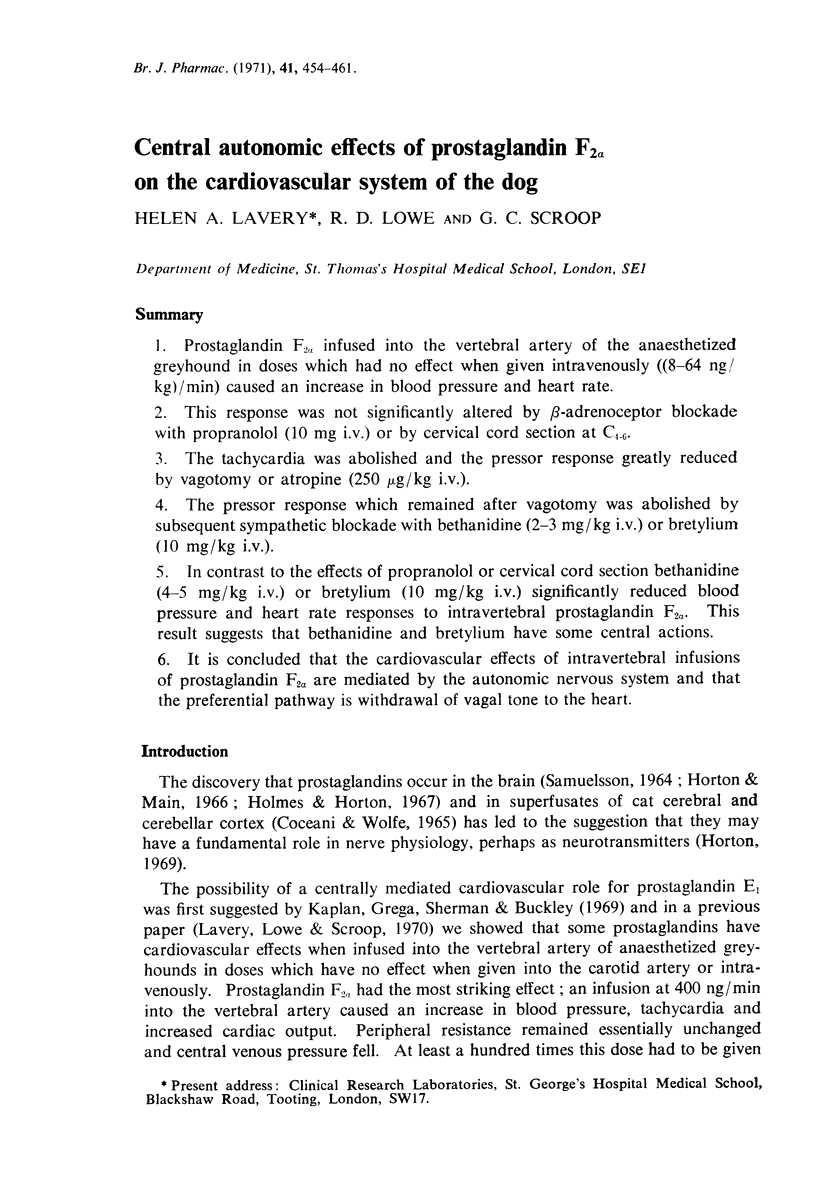
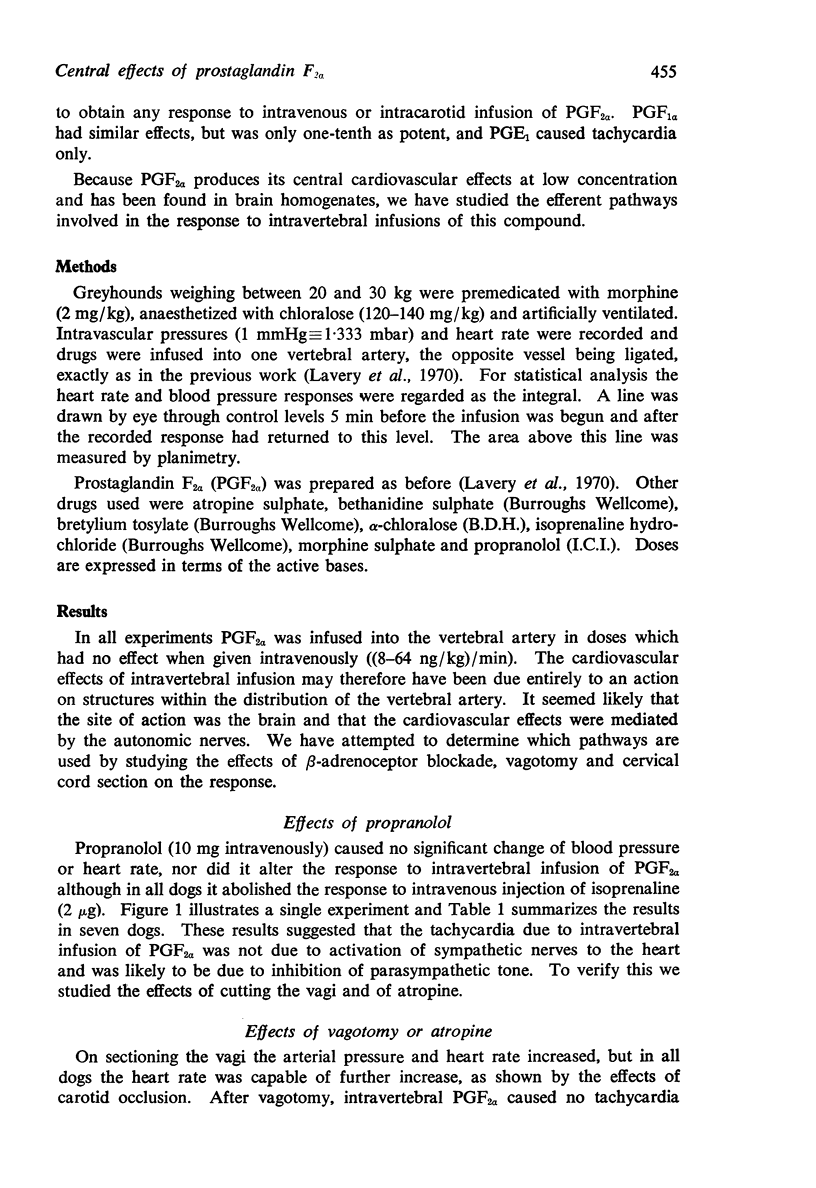

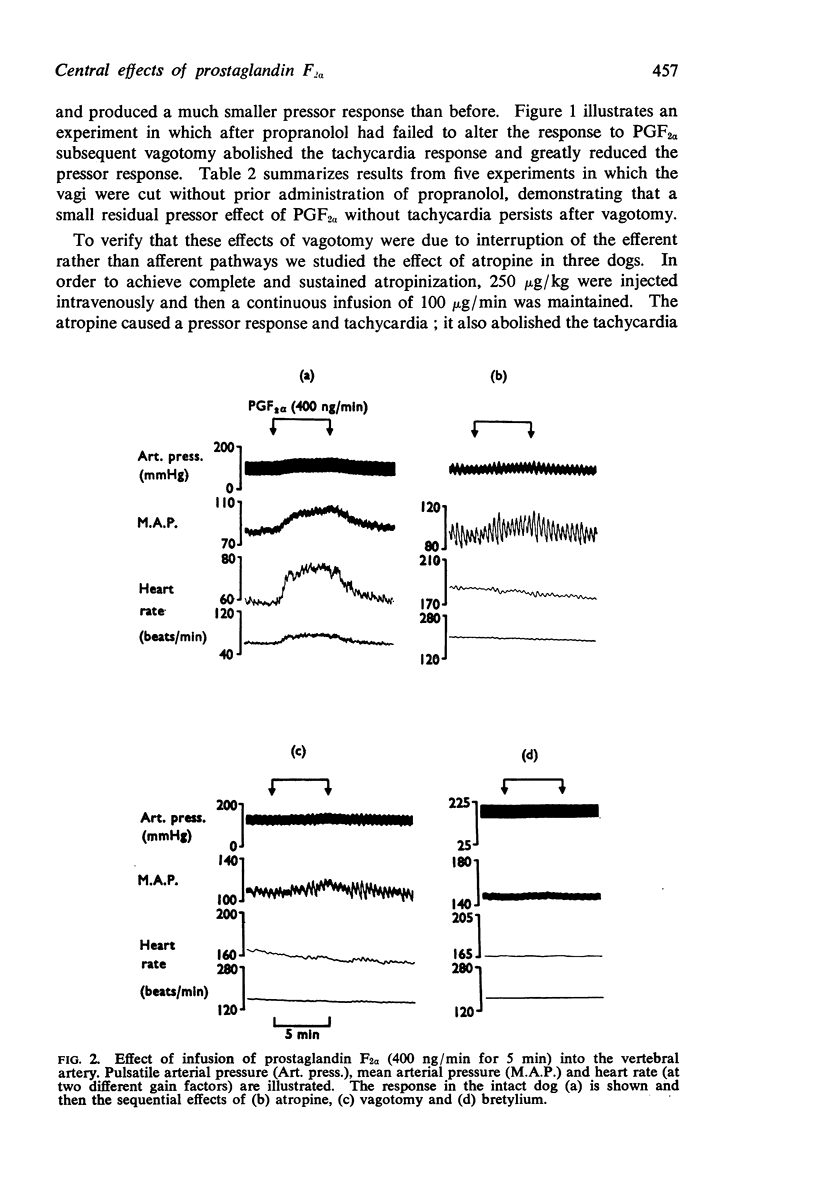
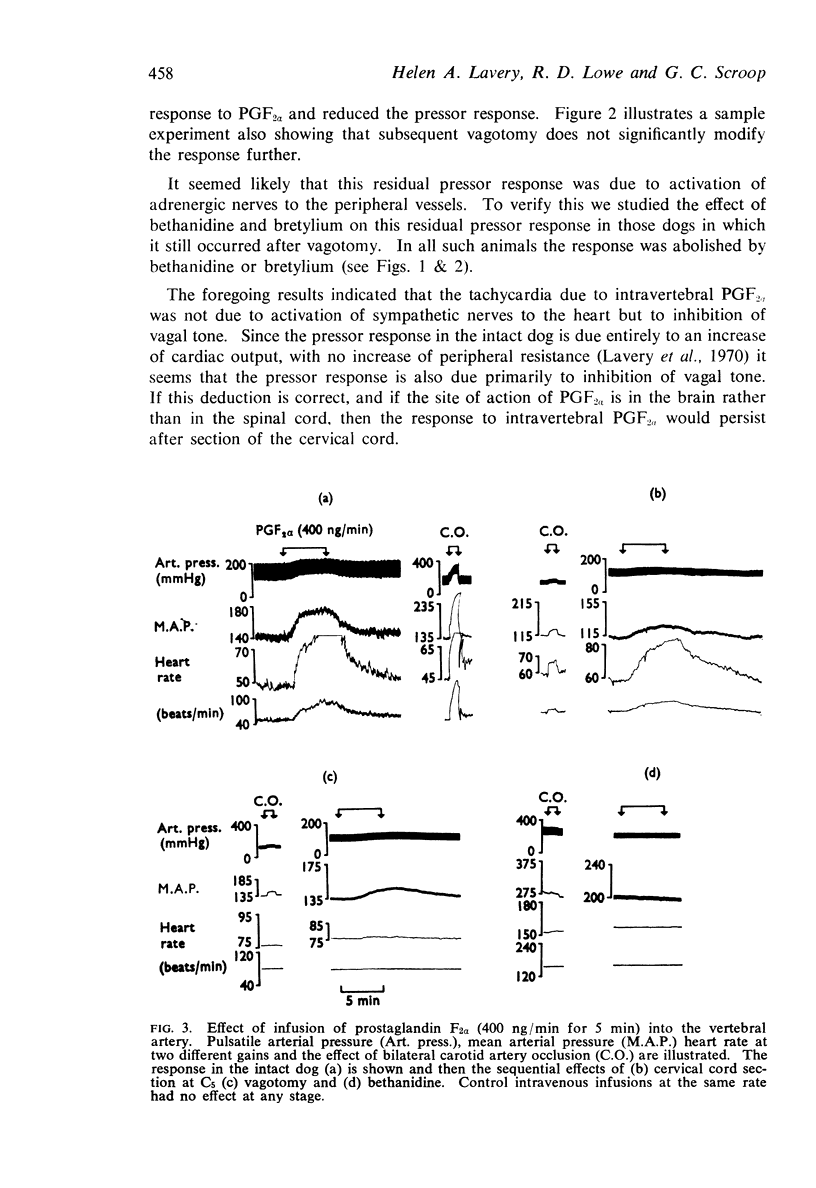
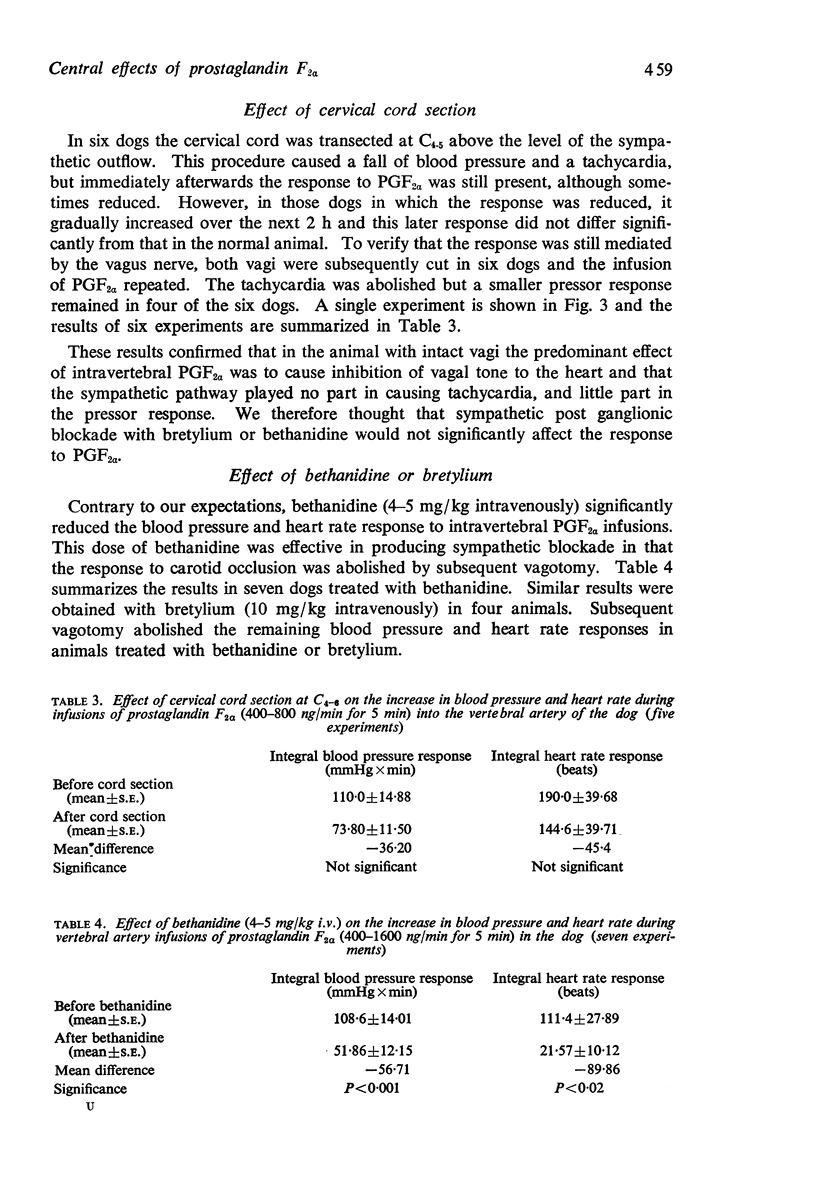


Selected References
These references are in PubMed. This may not be the complete list of references from this article.
- Avanzino G. L., Bradley P. B., Wolstencroft J. H. Actions of prostaglandins E1, E2, and F2-alpha on brain stem neurones. Br J Pharmacol Chemother. 1966 May;27(1):157–163. doi: 10.1111/j.1476-5381.1966.tb01651.x. [DOI] [PMC free article] [PubMed] [Google Scholar]
- COCEANI F., WOLFE L. S. PROSTAGLANDINS IN BRAIN AND THE RELEASE OF PROSTAGLANDIN-LIKE COMPOUNDS FROM THE CAT CEREBELLAR CORTEX. Can J Physiol Pharmacol. 1965 May;43:445–450. doi: 10.1139/y65-045. [DOI] [PubMed] [Google Scholar]
- Holmes S. W., Horton E. W. The identification of four prostaglandins in dog brain and their regional distribution in the central nervous system. J Physiol. 1968 Apr;195(3):731–741. doi: 10.1113/jphysiol.1968.sp008485. [DOI] [PMC free article] [PubMed] [Google Scholar]
- Holmes S. W., Horton E. W. The nature and distribution of prostaglandins in the central nervous system of the dog. J Physiol. 1967 Jul;191(2):134P–135P. [PubMed] [Google Scholar]
- Horton E. W. Hypotheses on physiological roles of prostaglandins. Physiol Rev. 1969 Jan;49(1):122–161. doi: 10.1152/physrev.1969.49.1.122. [DOI] [PubMed] [Google Scholar]
- Kaplan H. R., Grega G. J., Sherman G. P., Buckley J. P. Central and reflexogenic cardiovascular actions of prostaglandin E1. Int J Neuropharmacol. 1969 Jan;8(1):15–24. doi: 10.1016/0028-3908(69)90030-6. [DOI] [PubMed] [Google Scholar]
- Lavery H. A., Lowe R. D., Scroop G. C. Cardiovascular effects of prostaglandins mediated by the central nervous system of the dog. Br J Pharmacol. 1970 Jul;39(3):511–519. doi: 10.1111/j.1476-5381.1970.tb10359.x. [DOI] [PMC free article] [PubMed] [Google Scholar]
- SAMUELSSON B. IDENTIFICATION OF A SMOOTH MUSCLE-STIMULATING FACTOR IN BOVINE BRAIN. PROSTAGLANDINS AND RELATED FACTORS 25. Biochim Biophys Acta. 1964 Apr 20;84:218–219. [PubMed] [Google Scholar]
- SHABETAI R., FOWLER N. O., HURLBURT O. HEMODYNAMICS STUDIES OF DOGS UNDER PENTOBARBITAL AND MORPHINE CHLORALOSE ANESTHESIA. J Surg Res. 1963 Jul;3:263–267. doi: 10.1016/s0022-4804(63)80053-0. [DOI] [PubMed] [Google Scholar]


